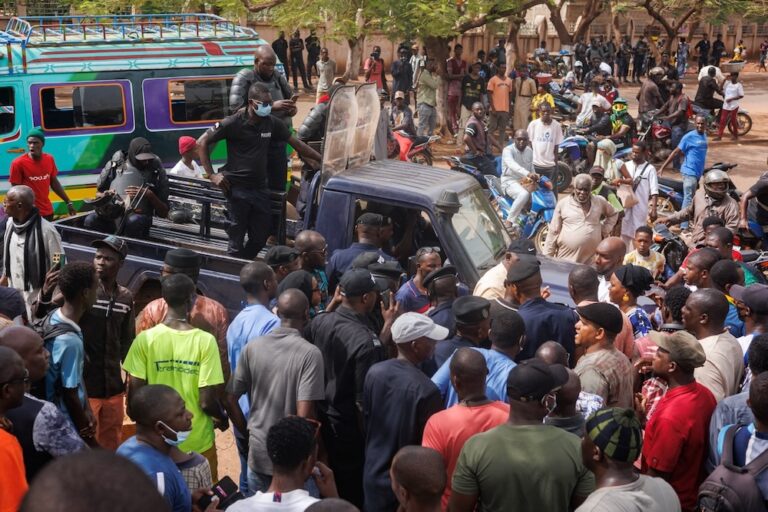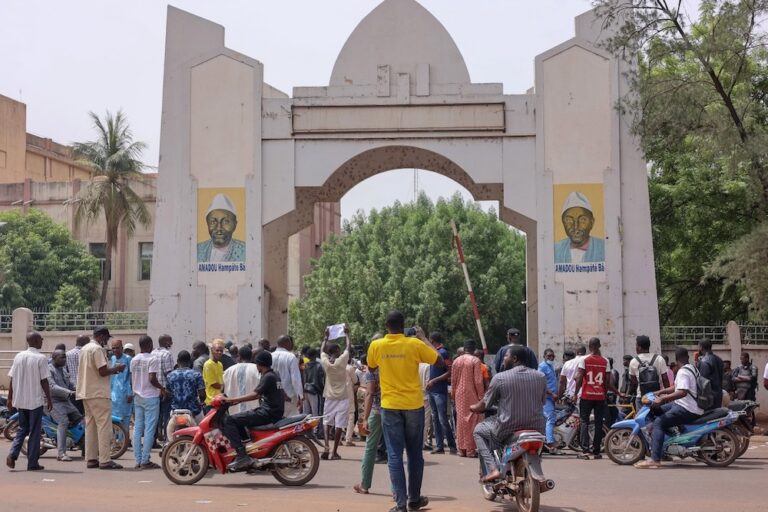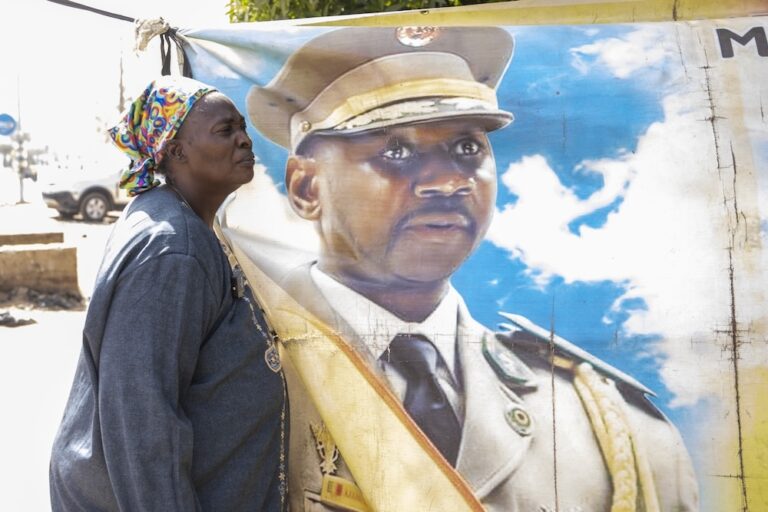The political crisis that erupted in the once stable and peaceful West African country of Mali in early 2012 led to significant deterioration of media and general human rights conditions in the country. A report by the Media Foundation for West Africa analyses the state of the media as Mali recovers from the conflict.
The following is a report written by the Media Foundation for West Africa. Click here to read it as a pdf.
I. Introduction:
The political crisis that erupted in the once stable and peaceful West African country of Mali in early 2012 led to significant deterioration of media and general human rights conditions in the country. Several media organisations were vandalized or closed down mainly by rebel groups. Several journalists also suffered various forms of harassment and physical attacks occasioning a dangerous working environment for journalists and media workers. These acts of human rights violations were particularly prevalent and serious in the northern parts of the country, mainly in the regions of Kidal, Gao and Timbuktu.
Following the political crisis and the predictable dire implications for media freedom and human rights conditions in the country, the Media Foundation for West Africa (MFWA), Panos Institute of West Africa (PIWA) and the Copenhagen-based International Media Support (IMS) carried out a media sector needs assessment in Mali through a joint mission during the crisis.
The report of the mission highlighted serious challenges in the media including the safety of journalists and information gap between the north and south of the country.
To help deal with some of the challenges indentified during the mission, the three organisations launched a joint project in May 2013 to help strengthen the Malian Media to enable them contribute effectively to the peace-building and democratic processes in the country. A major component of the project which is being implemented by the MFWA is focused on promoting human and freedom of expression rights; and promoting the safety of Journalists in Mali. This component of the project specifically involves monitoring and exposure of free expression and human rights violations in the country.
The MFWA accordingly recruited and trained three free expression rights monitors in addition to an existing monitor, and deployed them to monitor and report on incidents of free expression rights violations in the country. The monitors were assigned to Mali’s three northern regions – Kidal, Gao and Timbuktu, as well as the capital, Bamako.
This report summarises reports received from the monitors for the months of May and June and highlights issues relating to, freedom of expression and safety of journalists, and the state of media development.
II. Freedom of Expression and Safety of Journalists
Mali was one of the few countries in West Africa with high standards of press freedom prior to the crisis. The country was often rated as a “Free Country” on various internationally recognized press freedom ratings. Journalists and FoE rights activists were able to work and carry out their activities with minimal fear or reproach as the country remained one of the few on the continent that recorded few FoE rights violations.
However, the crisis resulting from the March 2012 military coup, led to serious deterioration of press freedom conditions in the country. Several media organisations, particularly those in the north of the country, were vandalized or closed down mainly by the rebel groups that took over the territory. Journalists were subjected to various forms of attacks and intimidations. Some were kidnapped, accosted and interrogated amongst other armed attacks on media organizations. Indeed, freedom of expression was thwarted and journalists feared for their safety.
During the crisis that ensued, about 57 radio stations and many newspapers were forced to shut down or suffered brutal attacks from the rebel groups with Mali’s three northern regions most affected. For instance, in the Gao region, about 21 radio stations were affected by the crisis. The Timbuktu region had its 26 private radio stations all of which were functioning prior to the crisis close down either under duress or by reason of the occupation force (MNLA An-sardine) with the exception of Radio Hissa ber based in Niafounké, which operated under the control of the MNLA.
Islamist groups controlled the information flow in and out of the country’s northern region, leaving the population in the south unable to access information about the north and vice versa.
However, the first two months of intensive monitoring by the MFWA has shown steady progress in the general press freedom and safety of journalists’ conditions in Mali. For instance, the monitoring reports show that:
i. about 25 out of 57 radio stations and newspapers that suffered closure have resumed broadcasting and publication. For instance, in the Gao region, about 13 out of 21 radio stations affected by the crisis, have resumed broadcasting while five (5) newspapers have also re-appeared on the newsstands. In Timbuktu, about 10 radio stations have commenced operations.
ii. No significant attacks against journalists were recorded within the period. Journalists in most part of the country have returned to post and are able to go about their duties with minimal or no fear of harassments.
On the overall human rights situation in Mali, the monitoring reports show that situation is improving, however, there are concerns about the safety of journalists and media organisations still stationed in the Kidal region, where there are pockets of rebel groups still attacking and harassing citizens. Again, citizens in close by regions such as Gao also seem apprehensive of actions of the rebel groups stationed in nearby Kidal. For instance, “a few months ago, two Kidal bound trucks were intercepted by armed men believed to be members of the MNLA. The occupants were whipped and five motorbikes and an amount of 3,750 000CFA Francs were taken away”.
III. Media Development:
The media landscape in Mali was stable and continually expanding with the proliferation of media outlets. According to the IMS-MFWA-PIWA 2012 mission report, Mali before the crisis had a thriving media sector and a regulation mostly favourable to freedom of expression. Malian media development was held as a regional model and received strong technical and financial support from international and regional organisations.
However, the crises aside affecting access to information also impacted negatively on Information quality. The northern media outlets, which remained in operation, published propagandistic messages and the media in the south were thus unable to collect and report verified information on the situation in north. The media in both parts of the country were susceptible to coercion and bribery, which compromised the quality of their content.
However, the MFWA monitoring reports show ongoing activities and steps to improve professionalism and increase respect for the profession as well as sensitize the media on their role in promoting peace and national cohesion. For instance, as part of such steps to strengthen their front, journalists in Mali on May 31, 2013 formed the Union of Journalists Reporters (SYJOR), to increase their common voice and complement the work of the national union body – Maison de la Presse.
Again, ahead of the July 28 presidential elections, the monitoring reports show that the media in Mali received series of sensitisation and training programmes to build their capacity on issues bordering on professionalism and safety precautions before, during and after the elections. Various civil society groups and media associations like the MFWA, IMS, PIWA, International Federation of Journalists (IFJ), National Union of Malian Journalists (UNAJOM) and UNESCO carried out a number of trainings for Malian journalists.
The trainings looked at themes such as: personal security, operational planning of media assignments, safety of accommodation and at the work place, movement in conflict zones, threats posed by weapons and protective measures, knowledge about kidnapping and special risks ; rioting and public disorder, aerial attacks, civic education and national reconciliation. Already, there are indications that these capacity building programmes impacted positively on the Malian media’s coverage of the presidential elections.
Despite these noticeable improvements in the Mali media however, there exists a few challenges affecting full operations by some media organisations, especially those in the North
a. Lack of electricity:
The monitoring reports indicate that electricity supply especially in northern Mali has been poor. For instance, the city of Gao receives power from 1800 to 2300 hours with untimely power outages. Some areas in the Gao region have been in total blackout for two months. Radio stations that manage to broadcast are able to do so because they have received solar panels from the Servile Forces.
In Timbuktu, radio stations are forced to broadcast only in the evenings between 1900 and Midnight depending on the availability of electricity supplied by the Timbuktu Thermal Station. For instance, at the district of Rharous, no radio station operates due to lack of power; at Goundam, out of the 5 radio stations, only Radio Solidarité broadcasts from 1800 to 2200 hours with two 12 Volts solar panels.
b. Limited or No Funds:
The monitoring reports indicate that some media outlets after the crisis operate with little or no source of revenue. Some radio stations still remain closed because they have not secured any assistance after they were vandalized by armed groups. Others remain closed due to huge technical damages resulting from the crisis.
CONCLUSION:
On the whole, there appears to be overall improvement in the Media, free expression and journalists’ safety in Mali after the crisis. Moreover, as the country urges towards a democratically elected government after the peacefully held July 28 presidential elections (which was acclaimed internationally), there are signposts of Mali re-establishing itself as a beacon of FoE and press freedom in the West Africa region.
Meanwhile, the as part of the joint MFWA-IMS-PIWA project, the MFWA will continue to vigorously monitor and report on developments in Mali and support the Malian Media to contribute effectively to the peace-building and democratic processes in the country.


